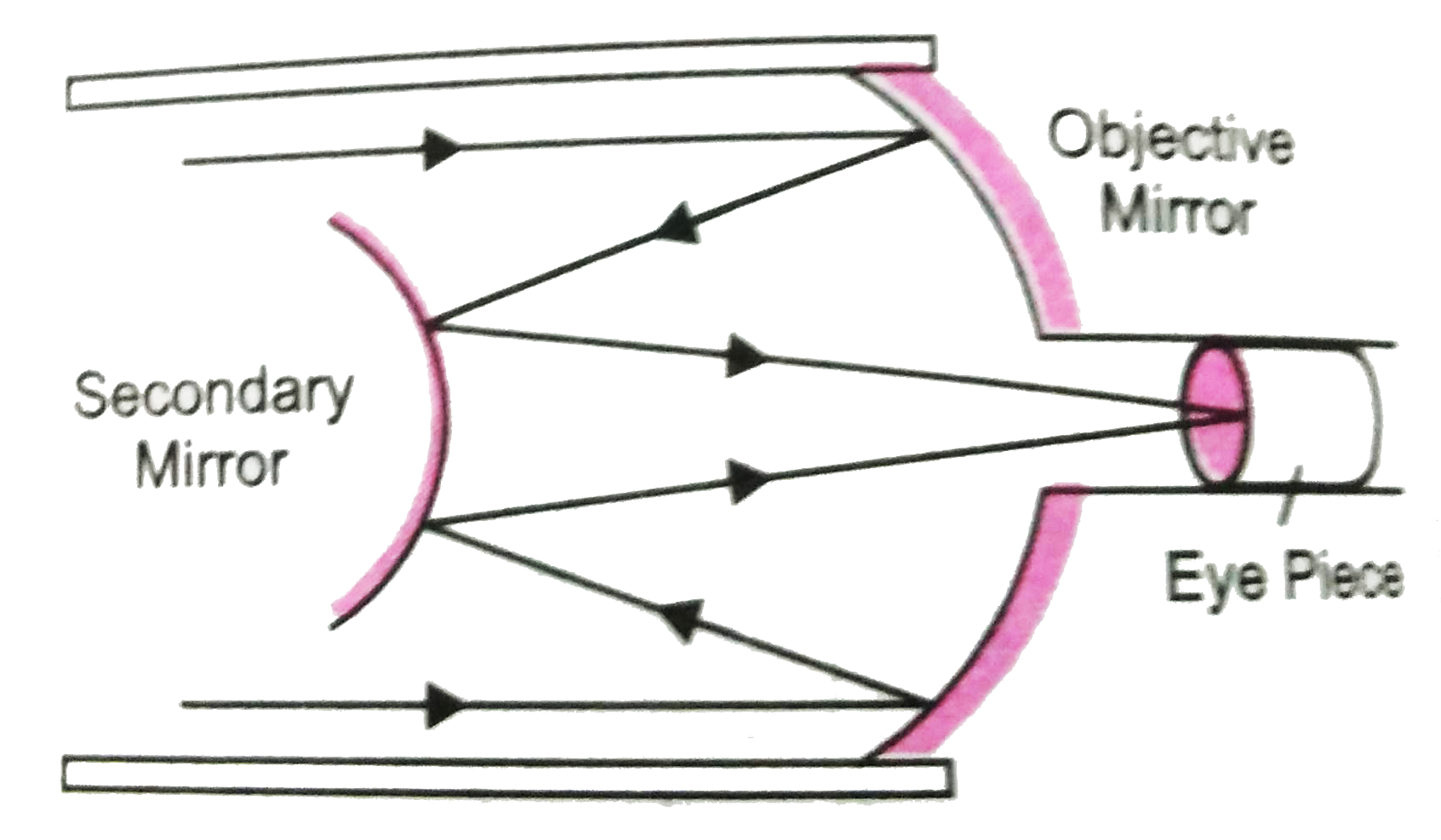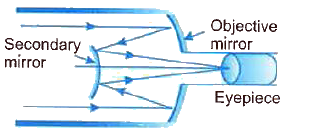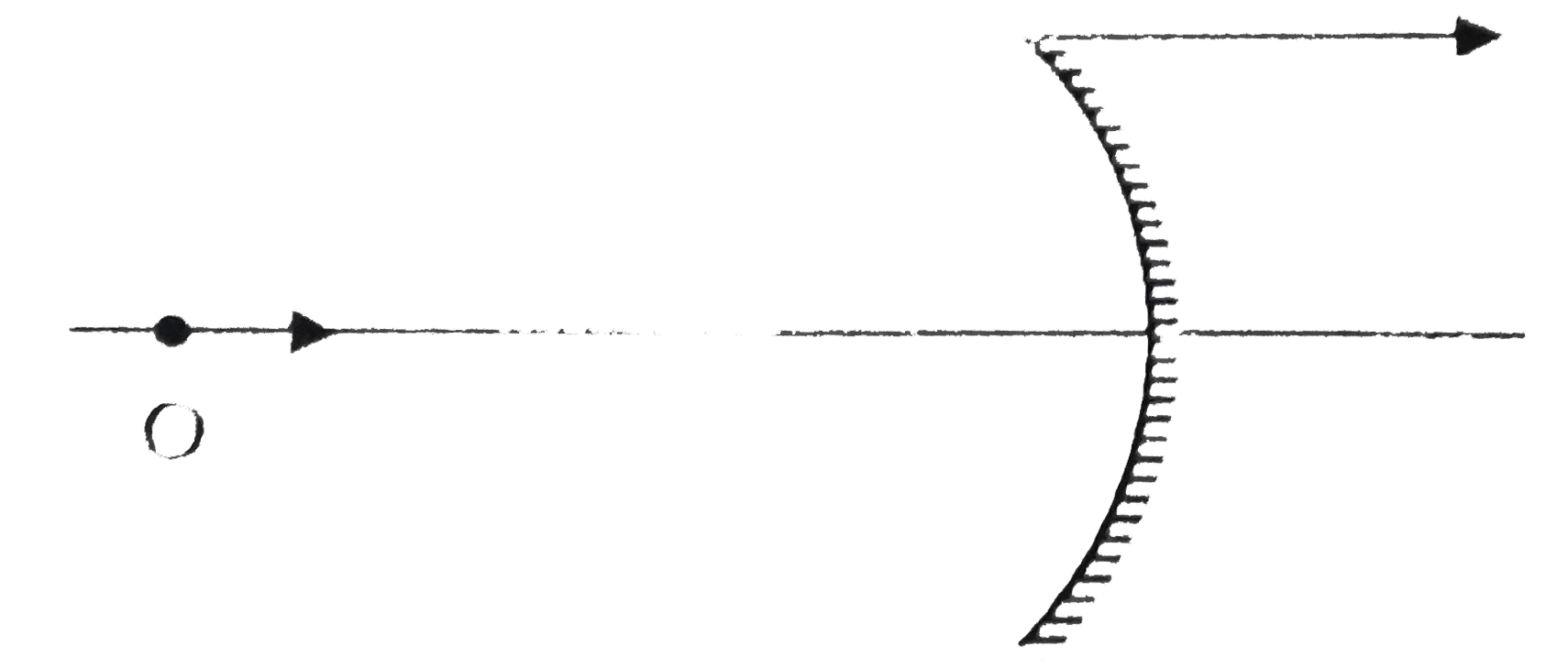A Cassegrainian telescope uses two mirrors as shown in Fig. Such a telescope is built with the mirrors 20mm apart. If the radius of curvature of large mirror is 220mm and the small mirror is 40mm, where will the final image of an object at infinity be ?

Here, radius of curvature of objective mirror
R1=220mm ltbr> Radius of curvature of secondary mirror
R2=140mm ,
f2=R22=1402=70mm
Distance between the two mirrors, d=20mm.
When object is at infinity, parallel rays falling on objective mirror, on reflection, would collect at its focus at
f1=R12=2202=110mm
Instead, they fall on secondary mirror at 20mm from objective mirror.
∴ For secondary mirror, u=f1−d=110−20=90mm
From 1v+1u=1f2
1v=1f2−1u=170−190=9−7630=2630
v=6302=315mm=31.5cm to the right of secondary mirror.
Topper's Solved these Questions
- OPTICSBOOK - PRADEEPCHAPTER - OPTICSEXERCISE - Very short answer question
5 Videos
- OPTICSBOOK - PRADEEPCHAPTER - OPTICSEXERCISE - very short answer questions
1 Videos
- MAGNETIC EFFECT OF CURRENT AND MAGNETISMBOOK - PRADEEPCHAPTER - MAGNETIC EFFECT OF CURRENT AND MAGNETISMEXERCISE - Competition Focus (Multiple Choice Questions)
2 Videos
Similar Questions
A Cassegrain telescope uses two mirrors as shown in Fig. 9.10. Such a telescope is built with the mirrors 20 mm apart. If the radius of curvature of the large mirror is 220 mm and the small mirror is 140 mm, where will the final image of an object at infinity be ?

View SolutionThe radius of curvature of a concave mirror is 50 cm. Where should an object be held from the mirror so as to form its image at infinity?
View Solution
Knowledge Check
A convex mirror forms a real image 5 times the size of the object placed at a distance of 20cm from it. The radius of curvature of the mirror is
A1003cmB503cmC100cmD50cmAn object is 100 mm in front of a concave mirror which produces an upright image (erect image). The radius of curvature of the mirror is :
Aless than 100 mmBbetween 100 mm and 200 mmCexactly 200 mmDmore than 200 mmA slab of glass, of thickness 6 cm and refractive index 1.5, is placed in front of a concave mirror, the faces of the slab being perpendicular to the principal axis of the mirror. If the radius of curvature of the mirror is 40 cm and the reflected image coincides with the object, then the distance of the object from the mirror is
A30 cmB22 cmC42 cmD28 cm
The radius of curvature of a concave mirror is 50 cm. Where should an object be placed from the mirror so as to form its image at infinity ?
View SolutionIn a Cassegrainian telescope, ……………………. is a large concave mirror.
View Solution
An object kept on the principle axis is moving in the sme directions as that of mirror as shown in the figure. Speed of object and mirror is 10ms and 4013ms. Radius of the curvature of the mirror is 20 cm. If the distance of object from the mirror at this instant is 5x cm, velocity of image at this instant is found to be zero. Find x.
View SolutionA slab of glass, of thickness 6 cm and refractive index 1.5, is placed in front of a concave mirror, the faces of the slab being perpendicular to the principal axis of the mirror. If the radius of curvature of the mirror is 40 cm and the reflected image coincides with the object, then the distance of the object from the mirror is
View SolutionThe radius of curvature of a convex mirror is 'x'. The distance of an object from focus of this mirror is 'y'. Then what is the distance of image from the focus ?
View Solution
